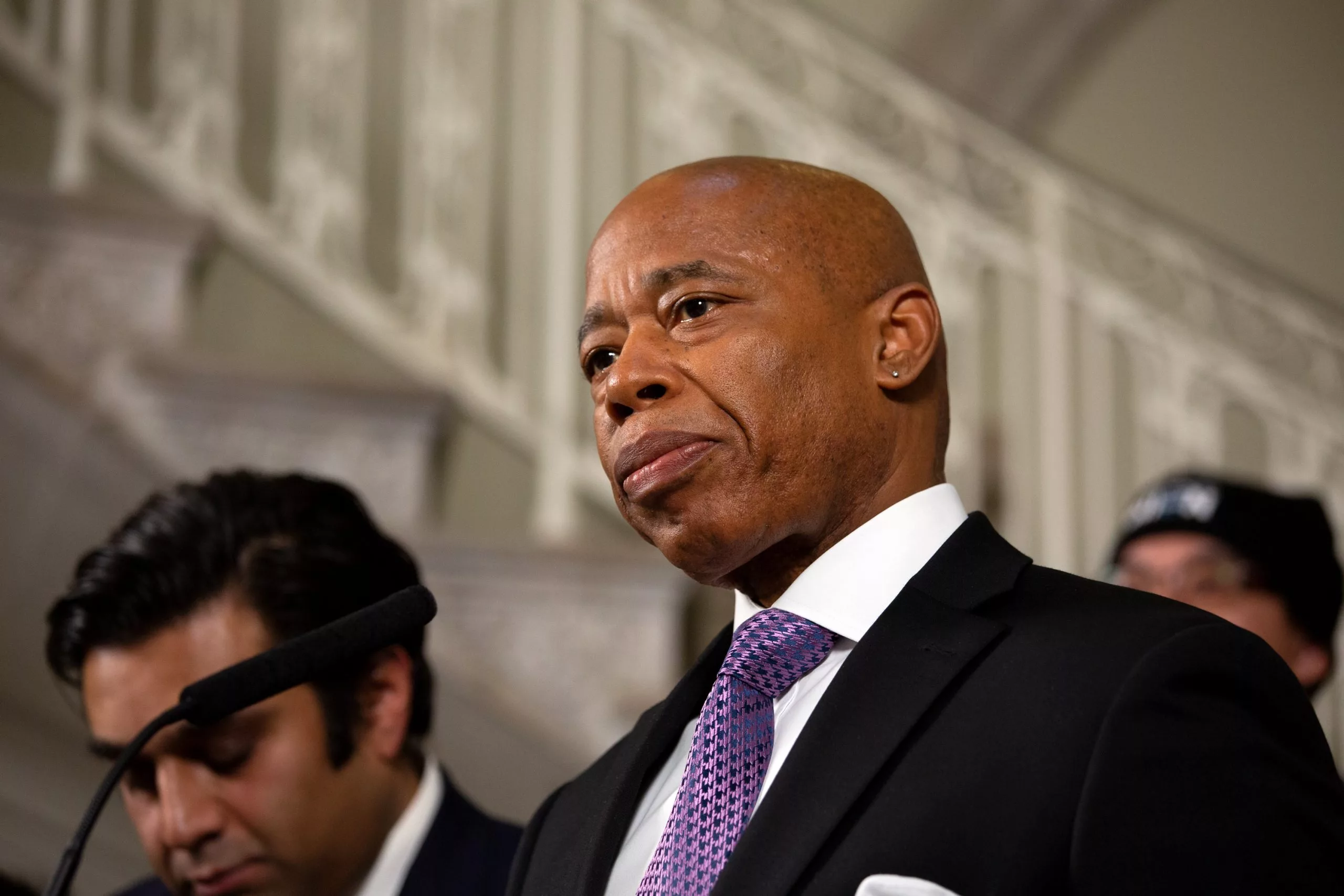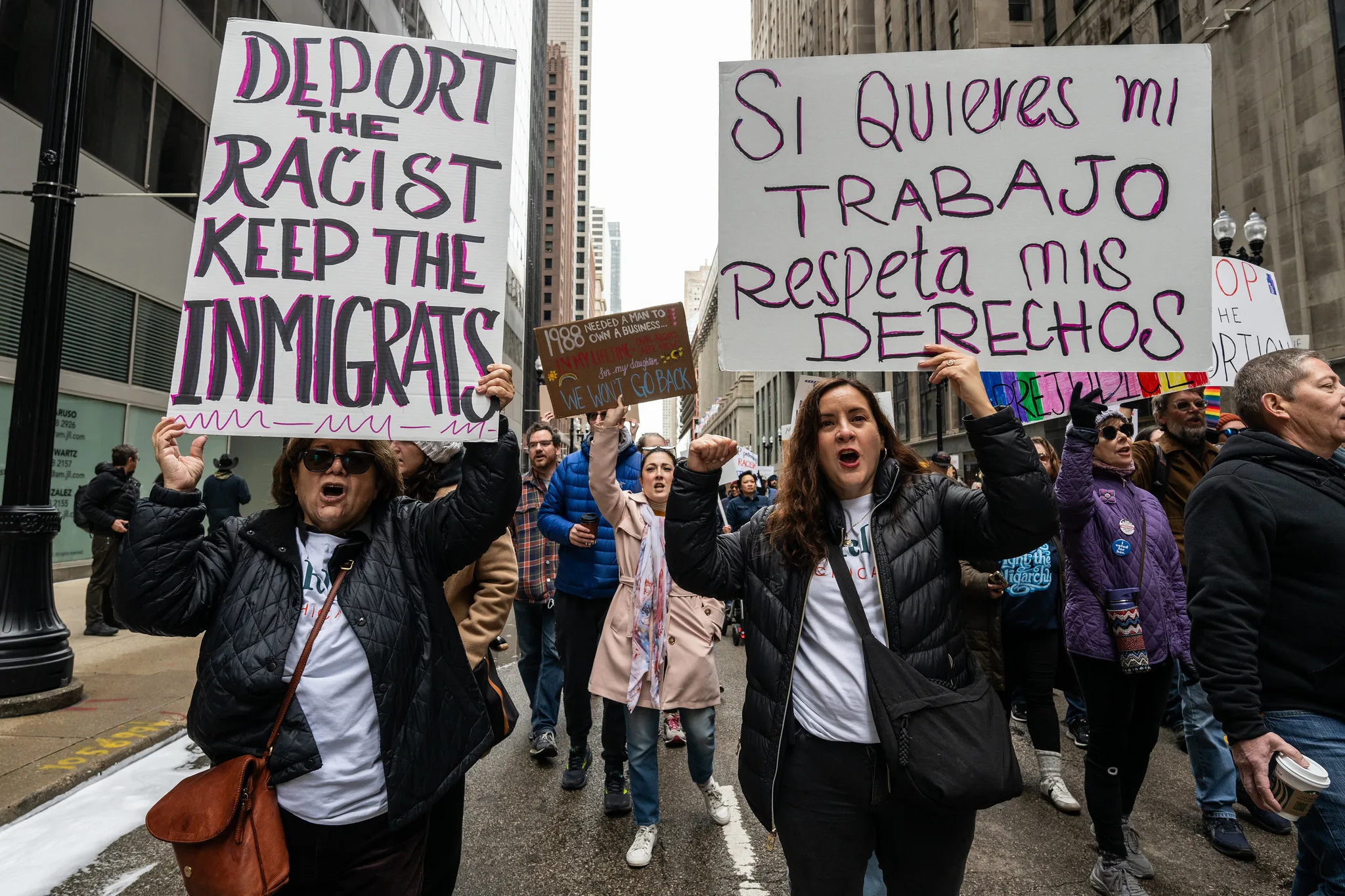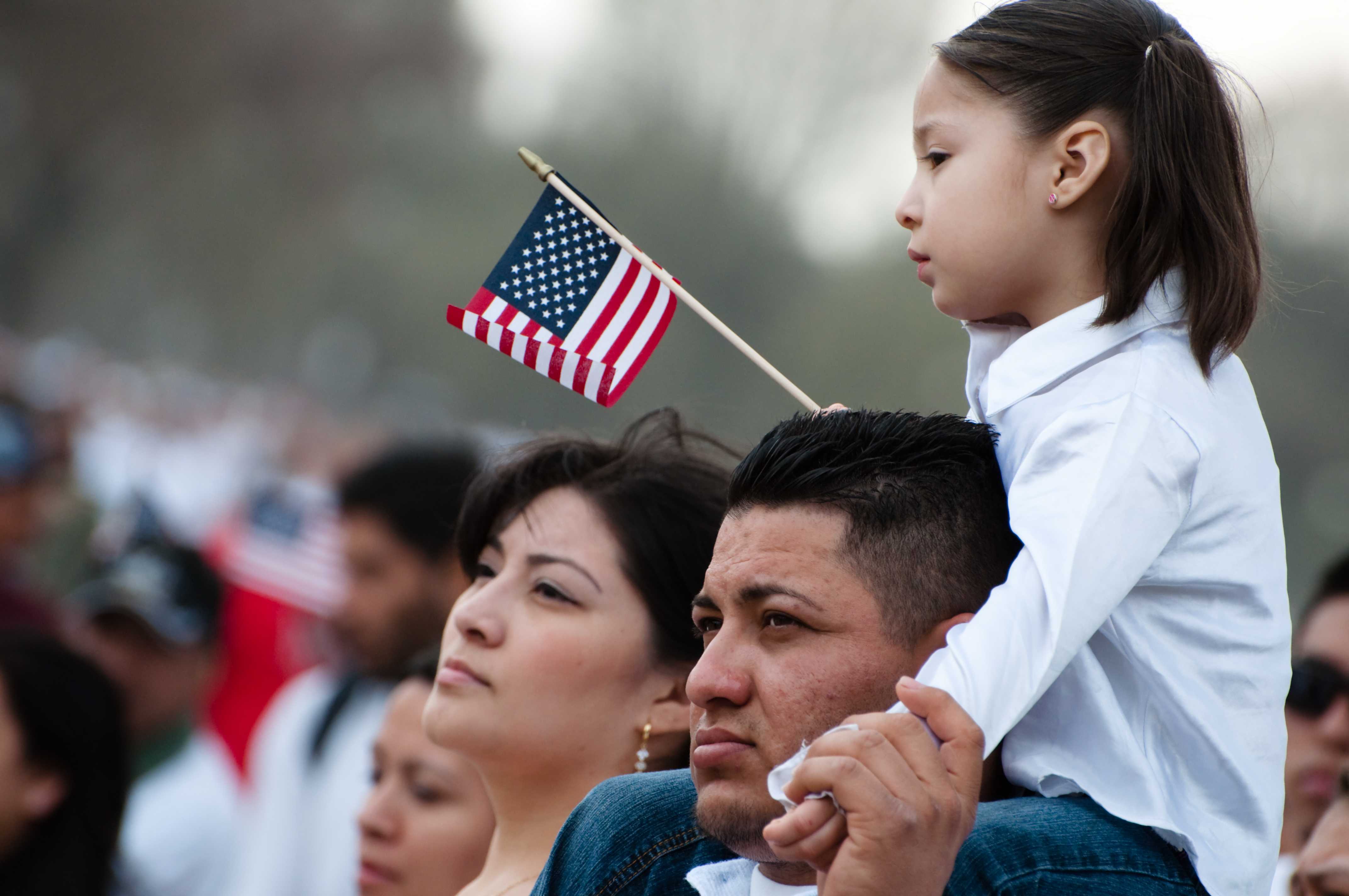Mayor Eric Adams positioned himself as a defender of immigrants rights on the campaign trail in 2021. But since the busing of newly arrived migrants in New York City began in the spring of 2022, Adams has had a different stance.
The politician, currently facing a federal corruption investigation involving bribery and fraud, has — in the weeks following President-elect Trump’s victory — expressed a willingness to work with the incoming administration which ran on a promise to conduct mass deportations.
And this week, Adams reiterated that he wants to go above the New York City Council’s authority and roll back NYC’s sanctuary city laws.
“The city council made it clear they don’t want to change that,” Adams said on CBS’s The Point with Marcia Kramer about sanctuary city laws, which prevent U.S. Immigration and Customs Enforcement from collaborating with local law enforcement. “I think they’re wrong. I have my teams looking at my power as executive orders.”
Also Read: Adams Wants To Collaborate With Border Czar Tom Homan on Deportation Policy
The only way for the city’s sanctuary city laws to be removed is through a legislative process where city council members cast a vote. The council has so far been hesitant to even consider rolling those protections back. Adrienne Eadie Adams, the Speaker of the NYC Council, defended the city’s sanctuary policies earlier this year, saying the policies “foster trust and cooperation between immigrant communities and local authorities which is critical to public safety.”
Since the city council has resisted his push to repeal sanctuary city protections through legislation, Adams appears to be exploring alternative methods to impose restrictions on sanctuary city laws. However, experts argue such actions would be illegal.
“The Mayor’s duty is to enforce the laws that are passed by the city council,” Elora Mukherjee, a professor of law and the director of the Immigrants’ Rights Clinic at Columbia Law School, told Documented.
“Any unilateral effort by Mayor Adams to change New York City’s sanctuary city provisions which were passed into law by the city council would be unlawful, unprecedented and undemocratic abuse of his authority,” Mukherjee added.
Going by Adams’ historical record, the possibility of him finding a way to use executive orders to tweak NYC sanctuary city laws — while unprecedented — cannot be ruled out.
Adams has used his executive order powers to create restrictions in two notable instances. Earlier this year, he effectively nullified the shelter system’s adherence to the right-to-shelter policy when he successfully used executive orders to impose 60-day and 30-day stay limits at homeless shelters. Immigrant rights advocates and legal experts pushed back against those shelter stay limits, which ultimately led to disorder and homelessness on New York City streets.
He also used emergency executive orders to suspend parts of Local Law 42 of 2024 — a law that bans solitary confinement in city jails. On December 9, the New York City Council and Public Advocate filed a joint lawsuit with the Supreme Court of the State of New York against Adams seeking to invalidate those emergency orders. The lawsuit argues that the mayor’s orders are “an unlawful and unprecedented abuse of emergency declaration power that no other NYC mayor has used to undo democratic process.”
“We are seeing a Mayor who seems intent on pushing his executive power to its outermost limits,” Mukherjee told Documented.
When people talk about NYC being a sanctuary city, they are referring to local government policies that restrict the sharing of information with federal immigration authorities about immigrants. These policies are designed to protect individuals from what supporters consider unjust or unnecessary law enforcement actions, such as arrests, detention, or deportation.
Local sanctuary policies in New York City go back at least to 1989, under an executive order by then-Mayor Ed Koch. Later in 2011, the first city law limiting cooperation with ICE was put in place. Then in 2014, city lawmakers expanded the protection under then-Mayor Bill de Blasio, limiting when and how the city’s police and correction departments could cooperate with ICE.
Experts on immigrant rights anticipate immediate litigation challenging the mayor’s abuse of his executive authority, if Adams unlawfully utilizes executive orders to change sanctuary city laws.














